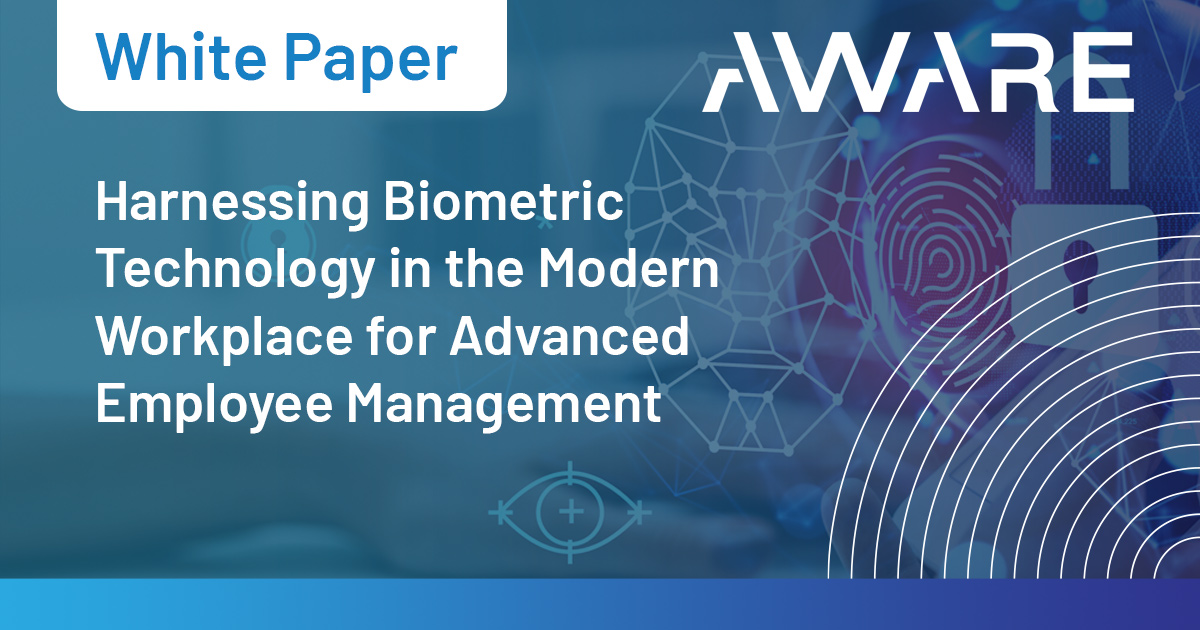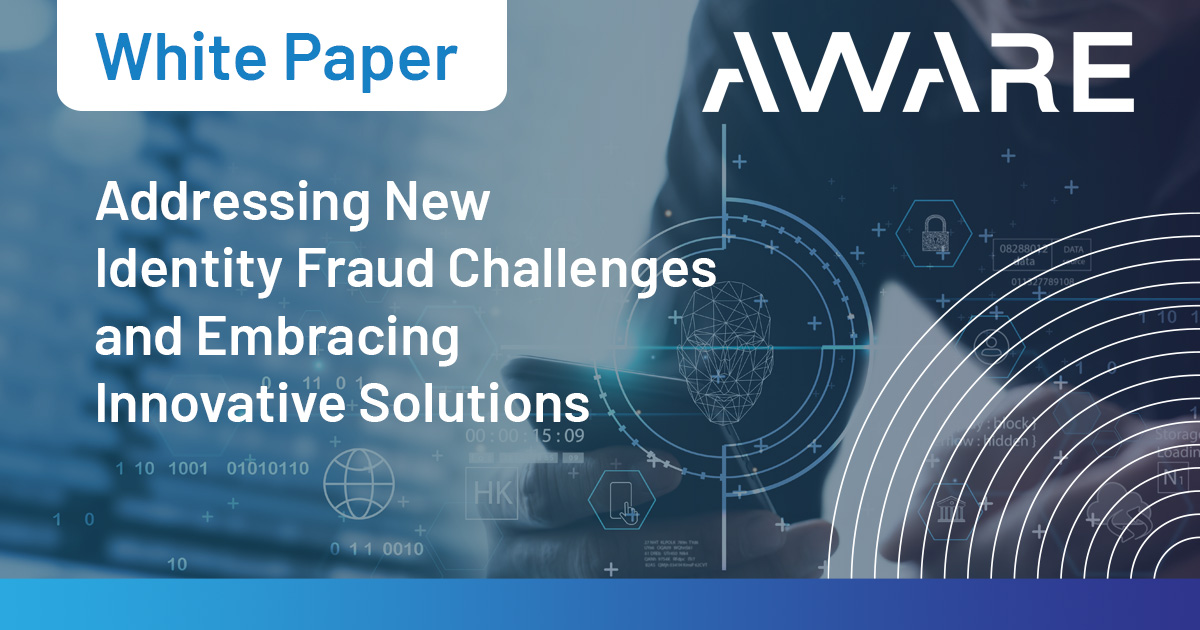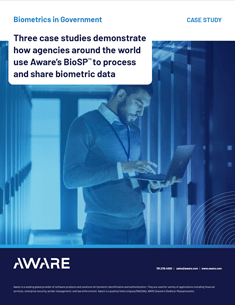Biometrics Simplified for Citizen Identification
For decades, Aware has been a trusted provider of software and solutions for government-sponsored, biometrics-enabled citizen identification and credentialing systems. Our innovative biometric solutions are designed to simplify the process of citizen identification, striking the right balance between security and user experience while ensuring compliance with regulations. With our expertise and track record, we can help you enhance national security, protect personal liberties, and streamline your citizen identification processes.
Biometrics Simplified for Citizen Identification
For decades, Aware has been a trusted provider of software and solutions for government-sponsored, biometrics-enabled citizen identification and credentialing systems. Our innovative biometric solutions are designed to simplify the process of citizen identification, striking the right balance between security and user experience while ensuring compliance with regulations. With our expertise and track record, we can help you enhance national security, protect personal liberties, and streamline your citizen identification processes.


Enhance national security by leveraging advanced biometric technologies for citizen identification and credentialing.

Improve the efficiency and accuracy of citizen identification processes for a seamless experience.

Ensure compliance with regulatory requirements and data protection standards.

Optimize operational workflows to reduce costs and save time.

Minimize identity-related fraud and protect personal information.
Do you…
We believe that citizen identification should be efficient, secure, and user-centric.
With our flexible biometric solutions, we are committed to meeting your current needs while future-proofing your citizen identification capabilities.
Simplifying Citizen Identification for Enhanced Security
Protecting the identity and rights of citizens doesn’t have to be complicated. At Aware, we understand the unique challenges faced by organizations responsible for citizen identification and the need for efficient, secure, and compliant solutions. With our extensive experience and trusted partnerships with numerous government agencies, we have the expertise to deliver results. Our biometric-based offerings enable seamless data collection, automate workflows, and enhance the speed and accuracy of identity verification processes. Partner with us to strengthen your citizen identification capabilities and ensure the security and privacy of your citizens. Contact us today for a complimentary consultation and discover how Aware’s solutions can support your citizen identification efforts.
Trusted since 1993

60+
PARTNERS

20+
COUNTRIES

20+
FINANCIAL INSTITUTIONS

150+
LAW ENFORCEMENT AGENCIES
Simplifying biometrics to solve complex identity challenges.

Complete solutions
For those looking for a turn-key solution, choose from lightning-fast identity verification, multi-factor authentication and multi-modal biometrics pre-configured in a single low-code platform. Or, an enterprise-scale identification and deduplication system with fingerprint and face-based search pre-configured for civil and criminal applications .
Frameworks
For those looking for a starting point, our framework provides proven, secure and convenient facial and speaker recognition with liveness for mobile, multi-factor authentication.
Connectors
For those looking to connect disparate systems, our powerful middleware is modular, agnostic and pre-configured to enable advanced biometric data processing, management and orchestration while giving you complete control.
Building Blocks
For those looking to DIY, Aware’s SDKs, APIs, applications, and subsystems are hardened and proven to fulfill critical functions within biometric identification and authentication systems.
Getting started with biometrics is simpler than you think!

Free consultation with Aware: Chat with us about your use case and we’ll share how others with similar use cases have been successful.

Decide the level of guidance preferred: Take advantage of Aware’s market-leading expertise to choose between an out-of-the-box solution, a framework to build on, a connector for existing systems, or the building blocks to DIY.

Purchase your solution: Buying from us is a breeze, with flexible purchase options to meet your procurement needs.

Let Aware’s Customer Success team aid in deployment of your solution: Included free with every purchase is initial support to ensure the successful rollout. Upgrade during the purchase process for ongoing annual maintenance and support.
The Aware Advantage
Solidify your leadership in your field.
Say goodbye to the worry, anxiety and frustration that comes with security vulnerabilities and a sub-optimal user experience, and say hello to peace of mind and the time to proactively address future success.
Less time fighting fires. More time being intentional.
“Aware has always been a pleasure to deal with.”
“Always stand by their product and respond to help/support when an issue arise. We are an organization with a history of working with Aware who continues to be happy.”
“Aware helped us become aware. Great company. If you have a need for a biometric software and solution, I would fully recommend them.”
“The application that we use with Aware has been a great asset to our onboarding process and I don’t know where I would be without it. Seemed like a no-brainer to reach out to the company that underpins all of the other solutions. Aware has got everything under one common infrastructure so we can take advantage of it within the product instead of having to be creative to make it work.”
“Aware really knows what they are doing, have a great product, and make you feel good working with them. They have a well-defined, modular technology so over time you can expand and adopt capabilities.”
“We are moving towards a digital transformation for the bank and Aware is a huge part of that. The support team is very helpful. Software, hardware, and vaporware – it’s real and it works.”
What you get
Aware offerings include software hardened and proved over thirty years in the field. The biometric algorithms are trained and tested on diverse data sets from around the world, combating any concerns over inadvertent bias. Included with every purchase is the initial support you need to be up and running successfully. And, depending on the offering selected, you’ll receive your digital access, API key or software packets within one business day.
We apply data science, machine learning and artificial intelligence to help you enroll, identity and authenticate individuals in line with your specific business requirements!
AwareID
Contact for price Lightning-fast identity verification, multi-factor authentication and multi-modal biometrics in a single, low-code platform.
Knomi
Contact for price Mobile biometric framework leveraging face and voice for enrollment and multi-factor authentication.
BioSP
Contact for price Modular, interoperable middleware platform enabling advanced biometric data processing and management between separate and disparate systems.
AwareABIS
Contact for price Full-featured automated fingerprint, palmprint, multi, and latent print identification, with optional face capabilities.
SDKs & APIs
Contact for price The perfect building blocks to DIY, Aware’s SDKs, APIs, applications, and subsystems fulfill critical functions within biometric identification and authentication systems.



